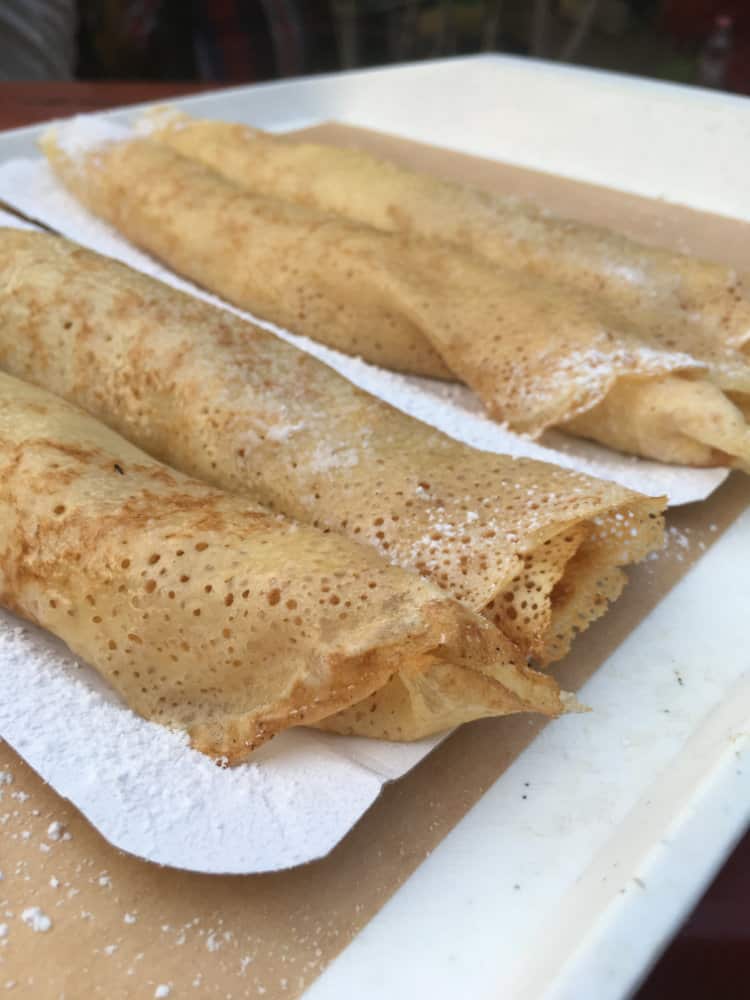
Palacsinta (Hungarian Pancakes): A Journey Through Tradition and Taste 🥞🇭🇺
When it comes to Hungarian cuisine, few dishes capture the essence of tradition and family gatherings quite like Palacsinta. These delicate, crepe-like pancakes are beloved throughout Hungary and have found fans worldwide. With their thin, soft texture and a nearly endless variety of fillings, Palacsinta is a versatile treat that can be enjoyed for breakfast, lunch, dinner, or dessert.
In this in-depth exploration, we’ll uncover the history of Palacsinta, share a detailed recipe with tips for perfecting them, explore regional variations, and dive into the cultural significance of this Hungarian classic. Whether you’re a seasoned cook or a curious beginner, this guide is your ticket to mastering Palacsinta at home!
The History of Palacsinta: A Culinary Legacy 📜
Palacsinta’s history is as rich and layered as its fillings. This Hungarian favorite has origins that can be traced back to the ancient Romans, who made a similar dish called “placenta” — a layered pastry made from flour and cheese. Over centuries, as the Roman Empire’s influence spread, so did variations of these thin pancakes. In Hungary, Palacsinta evolved into a staple dish, influenced by Austrian, German, and Turkish cuisines.
Palacsinta became particularly popular during the Austro-Hungarian Empire, where it was served in cafes and households alike. Its versatility made it a symbol of Hungarian hospitality, often presented to guests with a variety of sweet or savory fillings. Today, Palacsinta remains a beloved part of Hungarian culinary tradition, often served at weddings, festivals, and family gatherings.
What Makes Palacsinta Unique? 🌟
Palacsinta stands out from other pancakes for several reasons:
- Ultra-Thin and Delicate: Unlike American pancakes, Palacsinta is closer to French crêpes but slightly thicker.
- No Leavening Agents: The batter is made without baking powder or soda, giving it a smooth, melt-in-the-mouth texture.
- Sparkling Water Secret: Many Hungarians add sparkling water to the batter for a lighter, more airy texture.
- Versatile Fillings: From apricot jam to minced meat with paprika, Palacsinta can be customized endlessly.
- Cultural Symbol: Often seen as a symbol of Hungarian hospitality and comfort.
Ingredients for Authentic Hungarian Palacsinta 🛒
For the Batter:
- 1 cup all-purpose flour
- 1 cup milk (or oat milk for a dairy-free version)
- ½ cup sparkling water (adds lightness)
- 2 large eggs
- 1 tbsp granulated sugar (optional for sweet versions)
- 1 pinch of salt
- 1 tbsp vegetable oil or melted butter (plus more for frying)
Popular Fillings:
- Sweet Fillings:
- Apricot, plum, or raspberry jam
- Nutella or melted dark chocolate
- Sweetened cottage cheese (túró) with vanilla and raisins
- Ground walnuts or poppy seeds with sugar and cinnamon
- Apple compote with a dash of cinnamon
- Savory Fillings:
- Minced meat seasoned with paprika, onions, and garlic
- Mushroom and cheese mix
- Spinach and feta with garlic
- Ham and béchamel sauce
How to Make Hungarian Palacsinta: Step-by-Step 🍳
1. Prepare the Batter:
- In a large bowl, whisk together the eggs, milk, and sparkling water until smooth.
- Gradually sift in the flour, sugar, and salt, whisking continuously to avoid lumps.
- Stir in the oil or melted butter until fully incorporated.
- Let the batter rest for 30 minutes to allow the flour to hydrate, ensuring smoother pancakes.
2. Cook the Palacsinta:
- Heat a non-stick skillet over medium heat and add a small amount of butter or oil.
- Pour ¼ cup of batter into the skillet, swirling quickly to coat the bottom evenly.
- Cook for 1–2 minutes or until the edges are golden and lift easily.
- Flip and cook for an additional 30–60 seconds.
- Transfer to a plate and cover with a towel to keep warm. Repeat with the remaining batter.
3. Fill and Roll:
- Spread your chosen filling evenly across each pancake.
- Roll each Palacsinta tightly or fold into quarters.
- For sweet versions: Dust with powdered sugar or drizzle with melted chocolate.
- For savory versions: Garnish with sour cream or fresh herbs.
Popular Variations of Palacsinta 🌍
1. Gundel Palacsinta:
- Filled with a rich mixture of ground walnuts, raisins, rum, and smothered in a dark chocolate sauce.
2. Hortobágyi Palacsinta:
- Savory pancakes filled with spiced minced meat and topped with a creamy paprika sauce.
3. Rakott Palacsinta:
- A layered pancake cake with alternating fillings of jam, nuts, and chocolate, baked to perfection.
Pro Tips for the Perfect Palacsinta 🥞
- Consistent Batter: If lumps form, strain the batter through a fine sieve.
- Right Temperature: Medium heat prevents the pancakes from browning too quickly.
- Resting Time: Allowing the batter to rest enhances the texture and makes flipping easier.
- Oil vs. Butter: Use oil for a crisp edge or butter for a richer flavor.
Healthier Alternatives 🌱
- Whole Grain Flour: Swap all-purpose for whole wheat.
- Sugar Alternatives: Use honey or stevia for a lighter option.
- Dairy-Free: Replace milk with almond or coconut milk.
Cultural Significance: More Than Just Pancakes 🇭🇺
In Hungary, making Palacsinta is a family affair. Often passed down through generations, the recipe is a way to preserve culinary heritage. It’s not uncommon for Hungarian grandmothers to make dozens at a time for festive gatherings, filling them with homemade jams or savory mixtures. Serving Palacsinta symbolizes warmth, comfort, and hospitality—an invitation to sit, share, and savor life’s sweet moments.
Serving Suggestions for Every Occasion 🎉
- Breakfast: Serve with a side of fresh fruit and a dusting of powdered sugar.
- Brunch: Pair with savory fillings like ham and cheese.
- Dessert: Warm with ice cream and a drizzle of caramel.
- Dinner: Stuff with meat or mushroom filling and serve with a side salad.